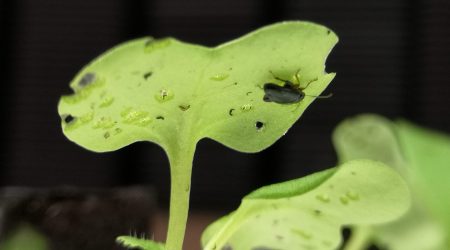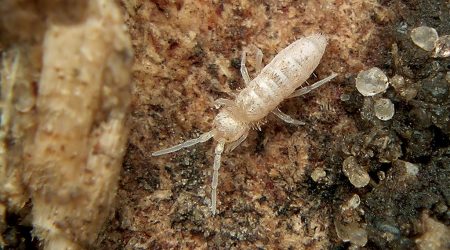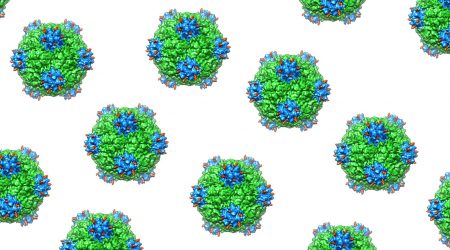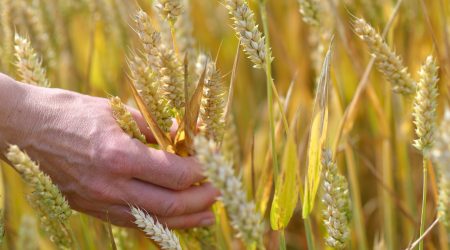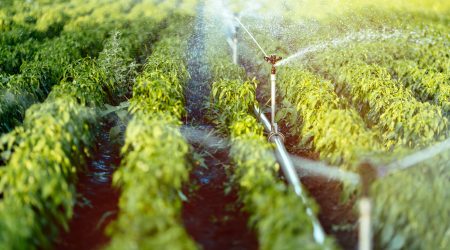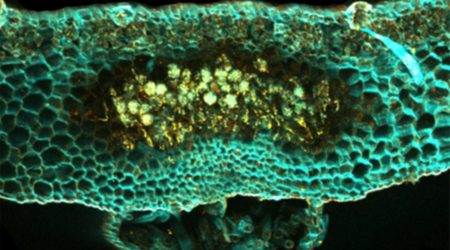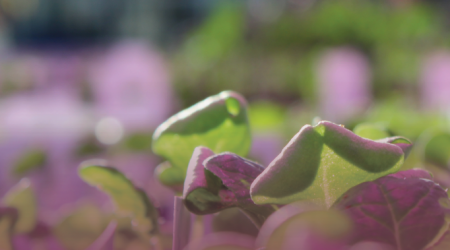A round-up of the recent research from the John Innes Centre from summer 2020
Research unearths the science behind the smell of spring
Researchers have discovered the secret behind the characteristic smell of spring given off by the compound geosmin.
The cause, according to the study led by Swedish researchers in collaboration with the John Innes Centre, lies in an ancestral mutual relationship between the soil bacteria Streptomyces and primitive, six-legged creatures called springtails (Collembola).
Professor Mark Buttner said, “There is mutual benefit. The springtails eat the Streptomyces, so the geosmin is attracting them to a valuable food source. The springtails distribute the spores, both stuck on their bodies and in their faeces, which are full of viable spores, so the Streptomyces get dispersed. This is analogous to birds eating the fruits of plants. They get food but they also distribute the seeds, which benefits the plants.”
Treating human autoimmune disease
Researchers have taken positive steps towards using plant virus-based particles for the treatment of human autoimmune diseases such as type 1 diabetes and rheumatoid arthritis.
The genetically encoded coat proteins of virus nanoparticles (VNPs) can be reprogrammed to incorporate new sequences for specific functions.
In a study led by the University of Verona, Italy, researchers used cowpea mosaic virus (CPMV) constructs developed in the Lomonossoff lab at the John Innes Centre. These VNPs displayed peptides associated with type 1 diabetes in order to modulate immune system response.
The researchers also used other VNPs, engineering tomato bushy stunt virus with peptides associated with rheumatoid arthritis. Using animal models to analyse immune system responses, they reveal that the re-engineered nanoparticles offered therapeutic benefits in both cases: protection against type 1 diabetes and improved symptoms of rheumatoid arthritis.
Detoxification enzyme discovery could be used to target major crop contaminant
Detoxification defence systems that have evolved in plants offer a potentially rich repertoire for agricultural and medical applications, but examples of recruiting them for metabolic engineering are rare.
Researchers used transcriptome analysis, virus-induced gene silencing and biochemical assays to isolate genes encoding a detoxification enzyme found in cotton. The enzyme, named SPG, has evolved to synthesise defence compounds in the cytosol, the liquid element of the plant cell.
The study shows that SPG can degrade the mycotoxin DON, which is produced by the pathogenic fungus Fusarium graminearum. Enzymes that can degrade these mycotoxins are urgently needed.
This study was carried out by researchers from the Chinese Academy of Sciences, ShanghaiTech University, with input from Professor Cathie Martin.
Plant water saving system works like clockwork, it transpires
Researchers have discovered that plant circadian clocks play a critical role in the efficient consumption of water.
They carried out experiments with model laboratory plants in which the genes encoding circadian rhythms had been changed.
“We reasoned that circadian rhythms might have a big impact upon the amount of water that plants use. And our experiments show this to be the case,” explains Dr Antony Dodd of the John Innes Centre, senior author of the study. The research opens an opportunity for the tuning of crops to use water more efficiently: losing less water through transpiration while still growing.
Three genes rule symbiosis
A study compared the genomes of nearly 400 plant species to understand what is unique to those that can form intracellular symbioses.
They discovered that three genes are shared exclusively by plants forming intracellular symbiosis and lost in plants unable to form this type of beneficial relationship involving the accommodation of microbes inside plant cells.
The research, led by Dr Guru Radhakrishnan and Dr Pierre-Marc Delaux at the University of Toulouse/CNRS, was conducted as part of the Enabling Nutrient Symbioses in Agriculture (ENSA) project sponsored by the Bill & Melinda Gates foundation.
ENSA is an international collaboration aiming at transferring naturally occurring symbioses to cereal crops to limit the use of chemical fertilisers and to improve yield in small-holder farms of sub-Saharan Africa where access to these fertilisers is limited.
Self-isolation or keep calm and carry on
New research suggests that plants, like humans, must balance self-isolation with life-giving connectivity when faced with a pathogen.
When a cell perceives a threat such as an invading fungus or bacteria, the plasmodesmata (tunnel like connections between cells), close over and the cells are temporarily isolated.
Researchers from Dr Christine Faulkner’s lab used bioimaging approaches to show that the cell wall material of fungus, called chitin, triggers different responses in the membrane that lines the plasmodesmal tunnels when compared to the responses it triggers in the membrane that surrounds the cell body.
The study concludes, “This raises questions whether there is a critical requirement for cells to balance connectivity and resource exchange with a protective mechanism imposed by isolation.”









